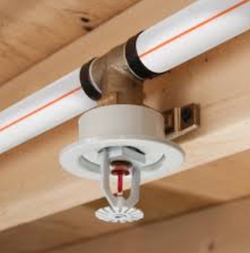 In January of this year, a family of six died in a fire in a relatively new home (built in 2005). Investigation showed it was electrical in nature and a dry Christmas tree contributed to the fast building and spreading fire. All six were determined to have died from smoke inhalation. There were smoke alarms in the house and no indication they did not work. The home was built four years before the county began requiring sprinkler systems in new homes.
In January of this year, a family of six died in a fire in a relatively new home (built in 2005). Investigation showed it was electrical in nature and a dry Christmas tree contributed to the fast building and spreading fire. All six were determined to have died from smoke inhalation. There were smoke alarms in the house and no indication they did not work. The home was built four years before the county began requiring sprinkler systems in new homes.
In 2011 there were 386,000 residential fires; these caused 3,005 civilian fire deaths, 17,500 civilian fire injuries, and $11.7billion in property damage. And this was an average year. Studies by the Federal Emergency Management Agency’s United States Fire Administration indicate that the installation of residential fire sprinkler systems could have saved thousands of lives; prevented a large portion of those injuries; and eliminated hundreds of millions of dollars in property losses.
To date, there are no reported deaths in any single family residence that has a sprinkler system installed.
National Institute of Standards and Technology (NIST) study found that homes equipped with smoke alarms and a fire sprinkler system experienced 100-percent fewer civilian fatalities and 57-percent fewer civilian injuries than homes equipped with only smoke alarms.
In a home with sprinklers the average property loss per fire is cut by about 70% (compared to fires where sprinklers are not present). The cost of installing home fire sprinklers averages $1.35 per sprinklered square foot.
The question is, why are residential fire sprinklers not required in all cities, or all states? Opposition starts with home builders associations who complain that the cost is too high (have you priced a house lately, it is all too high), sprinklers are unsightly, they go off accidentally, they cause unnecessary damage when they are activated, and my favorite, there just aren’t that many fires in homes. Tell that to the family of six and all the others who perish because there are too many excuses.
Seven years ago at a statewide fire marshals meeting, the then president of the fire chiefs association stated that in the next legislative session that association was going to lobby the legislature hard for residential sprinklers in all new one and two family homes. The fire marshals never heard anything and seven years later there still is no law.
But it has to start there. The fire chiefs associations (local, state and national) have to push hard for this kind of legislation. The international firefighters should be on board also. The fire marshals associations can push hard for the chiefs to do the right thing, but, it’s still up to the chiefs. If all else fails, each municipality can enact requirements for sprinklers in their city or county, much like Anne Arundel County did, albeit too late for that family of six.
For a list of States with home fire sprinkler requirements;
http://firesprinklerinitiative.org/legislation/sprinkler-requirements-by-state.aspx
For a list of States that prohibit Anti-sprinkler legislation:
http://firesprinklerinitiative.org/legislation/anti-sprinkler-legislation.aspx
One more fact. If the fire is out on arrival due to a residential fire sprinkler, how much risk remains for the firefighter?
Stay Safe – Everyone Goes Home
William Jolley has 37 years of experience in the fire service with 20 of those years in a management position. William was the Fire Chief of Haines City, Florida, a city of Approximately 20,000. Prior to that William was the Assistant Chief of Saint Petersburg, Florida, where he worked for 35 years.


